 Your new post is loading...
 Your new post is loading...
What if tattoos weren’t just decorative, but could convey real-time data about your body? That’s the vision of the MIT Media Lab researcher Katia Vega, whose project DermalAbyss explores the possibilities of tattoos inked with biosensors instead of traditional ink. In collaboration with Harvard Medical School, Vega created three different types of biosensor inks that measure the shifts in interstitial fluid in your skin, changing color based on the levels of glucose, sodium, or pH in your body. Vega, who is a computer scientist by training and is currently opening a computer science department at Peru’s University of Engineering and Technology, believes the skin can act as a new kind of interface. She’s been researching what she calls “beauty technology” for seven years, combining cosmetics and electronics to create things like smart fake eyelashes, conductive makeup, and RFID-enabled nail polish. But while these former projects enable wearers to interact with the outside world through different types of cosmetic interfaces, injecting biosensors below the skin allows Vega to connect internal biological processes with external interfaces. “I wanted to go deeper, not just on the top of your epidermis,” she says....
Until now, the risk of slightly stained teeth has been just a small price to pay for the satisfaction and energy boost that coffee brings. However, London-based startup CLR CFF claim to have created the world’s first ‘colorless coffee’—the pair of words itself almost an oxymoron. brewed with high quality arabica coffee beans and pure water, the disconcerting drink promises a ‘fresh, aromatic taste and flavor’ that does not require sugar or milk. Made with a ‘never before used’ coffee brewing method, the brew comes without the dark brown color of the coffee as we know it , and consequently does not yellow your tooth enamel. CLR CFF promises that the energy-boosting beverage does not contain preservatives, artificial flavors, stabilizers, sugar or any other sweeteners. the startup—founded by slovakian brothers david and adam nagy—came about after the pair struggled with teeth stains brought about by a caffeine-infused lifestyle. After finding nothing on the market that filled the gap left by coffee without staining their teeth, the duo set out to create a drink brewed with the same arabica beans, that wouldn’t have such a negative effect on their smiles..
Less is a bore, as Robert Venturi once said. Minimalism has held a tight grip on the modern design industry for the past decade. We embraced the Apple aesthetic, extolled the logic of Helvetica, and worshiped at the church of Dieter Rams. It served its purpose, most recently, as a correctional to the excesses of the 1990s. But lately, as dispatches from Milan Design Week have shown, asceticism has given way to audacity. Every April, hundreds of thousands of people trek to Milan for its trendsetting design week, which ultimately influences the furniture, accessories, and textiles that make their way into homes, offices, hotels, restaurants, and virtually every other interior. This year the artistic influences ranged from ’30s art deco to ’70s eclecticism. Designers and manufacturers experimented with digital fabrication–like 3D knitting–and rediscovered artisanal craft techniques, like lacquering, metal casting, and jacquard weaving. But one thing was consistent: They’re embracing luxurious materials and textures, testing ambitious silhouettes, and piling on the details to yield products and furnishings that are visually enticing and emotionally evocative.In other words, minimalism is dead; maximalism has arrived....
For those of us who commute, we’ll spend over a year of our lives stuck in traffic.” So said engineer Todd Reichert as he introduced an alternative at TED 2017: a 100% electric flying vehicle under development now. A recreational version of the vehicle, called the Kitty Hawk Flyer, is expected to launch in late 2017.
Using electronic sensors similar to those found in cell phones, the device controls and stabilizes eight electric rotors. “With this kind of control, we can make flying as simple as playing a video game, using a very similar set of joysticks,” Reichert says. The vehicle, with room for one person, is designed to make it possible for anyone to learn to fly in minutes.
Rapidly advancing battery technology makes it possible to run the vehicle on electricity. “We’re just crossing this threshold now where [batteries] start to make sense for flight,” he says. “This is incredibly exciting for us–it opens up an entirely new set of design possibilities. We can design with multiple, small, lightweight electric motors in a variety of different configurations.”
The first version of the vehicle, classified as an “ultralight” aircraft, somehow doesn’t require a pilot’s license and can avoid complex regulations. With current battery technology, it can fly about 15 miles before it needs to be recharged, though that range will increase as batteries continue to evolve. For now, it’s designed to be flown only above water, at a low height, to keep it as safe as possible. But the team plans to rapidly iterate other models that they want to be used more widely–and over city streets....
25 of the most rare photos in history you never seen before and won't believe this really happen around the world
Editor’s Note: In the world of web design, we tend to become preoccupied with the here and now. In “Resilient Web Design“, Jeremy Keith emphasizes the importance of learning from the past in order to better prepare ourselves for the future. So, perhaps we should stop and think more beyond our present moment? The following is an excerpt from Jeremy’s web book. Design adds clarity. Using colour, typography, hierarchy, contrast, and all the other tools at their disposal, designers can take an unordered jumble of information and turn it into something that’s easy to use and pleasurable to behold. Like life itself, design can win a small victory against the entropy of the universe, creating pockets of order from the raw materials of chaos....
For the last six years of my life, I have had teachers, lecturers and tutors drill into my brain: Wikipedia is not an acceptable source. And for six whole years I have steered clear of the tomes of knowledge Wikipedia offers me. No longer. Wikipedia has a knack for distracting me from the anxieties of daily life, and there is no better distraction than its carefully curated lists. So, for your consideration, here are the nine best lists on Wikipedia right now....
Yes -- I'm speaking of the era when music wasn't a downloadable, streaming product. And it really wasn't that long ago, either. I remember the days before CDs became a commodity, before I even started buying my own cassettes, when the walls of my childhood home were lined with shelves just crammed with vinyl records. I had a box of my very own 45s. I couldn't dream of a day when, to get the latest music or even learn about new artists, I wouldn't have to go out or even turn on the TV. That information would be presented on a computer. But music consumption has a far, far greater history than the days of classic record stores and 45s. It has prehistoric roots that somehow led to an era in which we enjoy multiple online and mobile options for listening to, well, pretty much whatever we want. So, how did we get here? It's a fascinating tale -- with a remarkably fast plot progression....
An artist in California is replacing garish billboard ads with nature photos that blend almost perfectly into the surrounding landscapes—because they show the landscapes themselves. Jennifer Bolande’s “Visible Distance/Second Sight” is gracing roadside scenes along Gene Autry Trail and Vista Chino in Palm Springs, California. When a viewer sees the outdoor posters from the right perspective, the large-scale images of the mountains in the distance align with the actual ranges, creating a striking juxtaposition of the virtual image and the real one. Part of a broader “Desert X” exhibition in the area, it’s meant to redirect attention from the advertisement to the natural world depicted in it. It’s been done before, to a degree. As we pointed out in 2015, artist Brian Kane’s work in Massachusetts used trees and stars to similar effect....
A huddle of seven worlds, all close in size to Earth, and perhaps warm enough for water and the life it can sustain, has been spotted around a small, faint star in the constellation of Aquarius.
The seven planets discovered around the dwarf star Trappist-1 confirm that the coming decade will belong to the study of exoplanets
The discovery, which has thrilled astronomers, has raised hopes that the hunt for alien life beyond the solar system could start much sooner than previously thought, with the next generation of telescopes that are due to switch on in the next decade.
It is the first time that so many Earth-sized planets have been found in orbit around the same star, an unexpected haul that suggests the Milky Way may be teeming with worlds that, in size and firmness underfoot at least, resemble our own rocky home....
While big businesses often have multiple decision makers with very specific ideas and guidelines to keep their existing brands consistent, smaller companies are usually more open to exploring new creative directions, and can move faster to implement them. If you need some more convincing that working with small businesses can result in some stunning creative work, we've put together a list of 15 small business branding examples to get you inspired for your next project...
The colors you choose while designing a website, poster or any other type of image will have a huge impact on whether or not the overall design is successful. After all, there is a lot of psychology behind the colors that people are attracted to, and designers need to incorporate this into everything they do.
Color contrast plays a very valuable role, but it is often overlooked, undervalued and misunderstood. To avoid this problem, you must learn more about color contrast, including how and why you should use it. Once you go beyond the basics of knowing that red and orange aren’t good colors to create contrast but black and white are, you can begin to develop an enhanced aesthetic that will please clients and viewers.
Why is Color Contrast So Useful?
Color contrast, in a nutshell, provides visual intrigue and keeps viewers interested. Consider for a moment how boring it would be if an entire poster was made from one color or only included shades from the same color family. Although there are some instances when this does work from an artistic perspective, it’s not an approach that is likely to grab someone’s attention when they’re perusing store shelves, looking at movie posters or surfing the web. Therefore, it’s wise to use contrasting colors whenever appropriate....
An architect by day and a master of illusion in his offtime, Ukranian Oleg Shuplyak, aka MrOlik, uses his technical skills as a trained architect to paint surreal optical illusions that contain portraits of other artists, authors and historical figures.
|
A friend and fellow writer I hadn’t heard from for a while sent me an email the other day. She wanted some advice, and I readily offered it. Then she wrote me a nice response–the sort of casually witty, stupidly impressive little thing that no one I know could have written but her. And at the bottom of her thoughtful email, Google offered me three quick responses in the iOS Gmail app: Thanks! You’re welcome! Sounds good to me! With a tap, I could auto-fill my response to her. Just like on Google’s Allo Messenger or Apple’s iMessage, I could let the software respond to an email or text not with a unique response, but a quick tap to say something like “haha,” “lol,” or “talk later.” Sometimes, it’s tempting! Sometimes–especially dealing with work emails in the off hours–I have hit those quick response buttons. But I also know that it’s very bad for me, and it’s bad for us, as a collective, creative species. Today, we face one of the promises of Silicon Valley: to quantify us. To average our individuality out. To train a model on all of those collective averages, creating the ultimate average response. To provide the convenience of never speaking uniquely again....
There will always be times in the day when you are in desperate need of a caffeine boost, yet no where near the closest café. and for these times, mokase have comprised the answer to your caffeine-deprived prayers, in the shape of a phone case that converts your smartphone into an on-the-go espresso maker. using a simple system of a disposable insert which houses the coffee, and an app that heats it up on demand, the mokase pours out an espresso made by your smartphone. On setting out to develop a product to brew coffee whilst out and about, Luigi Carfora and clemente biondo of ‘smart k’ had the idea of incorporating it into a gadget already carried around every day—the smartphone. the duo successfully designed a case that measures less than 1cm in thickness, is completely waterproof and insulates the coffee when brewed. through a side slit in the mokase, the ‘mokaromi’ cartridge is inserted. the coffee—sealed within a vacuum on the inside of the cartridge—is freed when inserted into the phone, as the ‘spout’ breaks the membrane of the vacuum allowing the drink to exit....
Bringing ideas to life in an organization can be a bumpy ride. We’re all familiar with the myth of Isaac Newton sitting under the apple tree, waiting for inspiration to fall on his head. Newton’s apple is one of the more common symbols of innovation, right up there with Archimedes shouting Eureka from his bathtub. Metaphorically, that’s what we do when go to a brainstorming meeting to come up with new ideas. If the conditions are right, and the coffee strong enough, the next great idea just might fall on our heads. What is often overlooked is what happens next, after the apple falls, when we have to actually bring that idea to life. If we’re not careful, Newton’s apple can turn into Newton’s applesauce, a watered down imitation of the idea. One of my first cartoons (back in 2002) was about this phenomenon.j...
Residents view the first iceberg of the season as it passes the South Shore, also known as "Iceberg Alley", near Ferryland Newfoundland, Canada April 16, 2017. REUTERS/Jody Martin
Humans are obsessed with happiness—how to find it, how to keep it, and how to define it. Here's a look at why.
EMany of us bemoan the fact that creativity seems to be in decline in America.Research by KH Kim finds that the ability to think creatively is down among children and adults, which suggests they may be less able to come up with creative solutions to problems. This trend worries those in the business sector and beyond, who fear it could spell disaster for the future of innovation. But what if the biggest block to creativity isn’t the inability to come up with new ideas and solutions to problems, but our inability to accept and recognize them? This idea is at the heart of Jennifer Mueller’s new book, Creative Change: Why We Resist It . . . How We Can Embrace It. Mueller, a former Wharton School management professor, uncovers the way our minds react to uncertainty and how that can get in the way of embracing creativity. Her book aims to give us the tools we need to be more open to creative ideas and to communicate them to others....
Intuition, argues Gerd Gigerenzer, a director at the Max Planck Institute for Human Development, is less about suddenly "knowing" the right answer and more about instinctively understanding what information is unimportant and can thus be discarded. Gigerenzer, author of the book Gut Feelings: The Intelligence of the Unconscious, says that he is both intuitive and rational. "In my scientific work, I have hunches. I can’t explain always why I think a certain path is the right way, but I need to trust it and go ahead. I also have the ability to check these hunches and find out what they are about. That’s the science part. Now, in private life, I rely on instinct. For instance, when I first met my wife, I didn’t do computations. Nor did she."I'm telling you this because recently one of my readers, Joy Boleda, posed a question that stopped me in my tracks:What about intuition? It has never been titled as a form of intelligence, but would you think that someone who has great intuition in things, has more intelligence?
When Twitter user Rory Cellan-Jones asked Google Home if Barack Obama is planning a coup, the digital assistant device responded by detailing a bogus conspiracy theory about the former president plotting a communist scheme to take over the government.
"According to details exposed in Western Centre for Journalism's exclusive video, not only could Obama be in bed with the communist Chinese, but Obama may in fact be planning a communist coup d'état at the end of his term in 2016," the smart home device's robotic voice explained, though it stumbled over the word "d'etat."
But this outlandish response isn't restricted to Google Home. Rather, it highlights a problem with how the search engine responds to queries in the form of "featured snippets" — short, direct answers highlighted at the top of its search results....
Becoming known may be the only permanent, sustainable competitive advantage we have in this tumultuous world. But where do you start? How do you do this? What is the role of social media? Blogs and video? Facebook, YouTube, Snapchat? How much time does it take?
This seems so overwhelming.
Well, until now. It does not have to be....
The 2016 election and new administration come accompanied by a renaissance of political image-making: The release of new cover art by magazines like Der Spiegel and Time are met with thousands of shares and retweets. Each photograph and illustration is analyzed and picked apart by commentators. And fomenting all of this is a protest movement with a flair for signage that remixes, reappropriates, and borrows the work of these artists.
Not since George Lois's iconic work for Esquire in the '60s has cover art enjoyed so much popular and critical success. It’s a fascinating time to be an illustrator, designer, or painter working on political subjects. Co.Design asked some of the voices and pens behind today’s iconic cover art about their work—and what’s changed in the past three months....
Twibfy is an inspirational platform and marketplace for creative professionals. Discover and purchase high quality digital visual content curated by creatives for creatives and organize it in the Twibfy cloud. The marketplace offers an environment for talented people to showcase their work and instantly sell it through the platform.
Curated directory of the best Product Pages
|



 Your new post is loading...
Your new post is loading...


















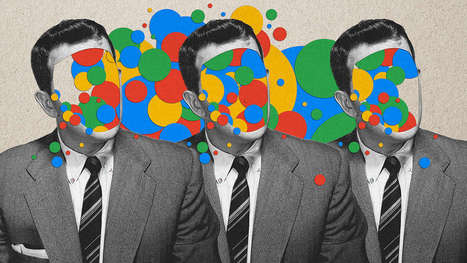

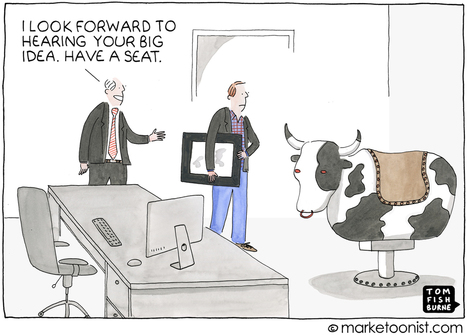




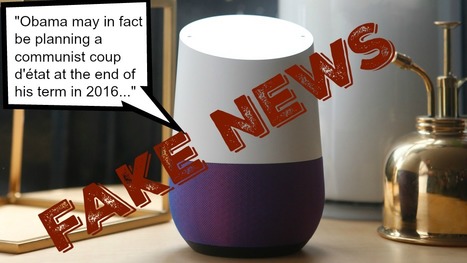
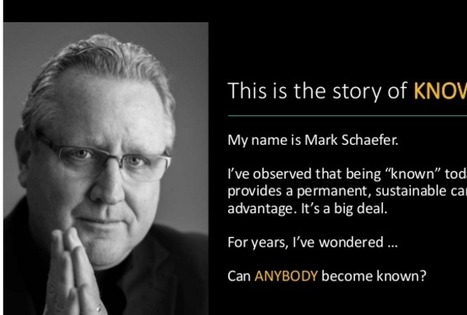

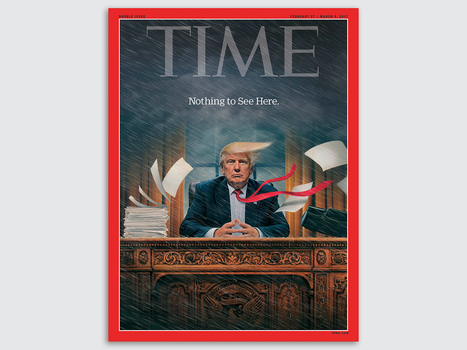


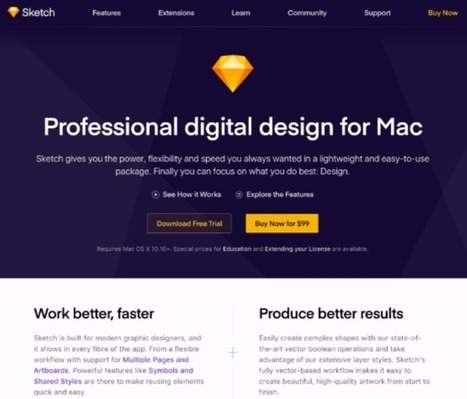





Researchers at MIT Media Lab and Harvard Medical School teamed up to create tattoo ink that reacts to your body’s chemistry.